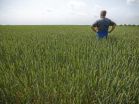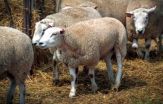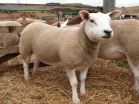(Press-News.org) A new series of measurements of oxygen isotopes provides increasing evidence that the Moon formed from the collision of the Earth with another large, planet-sized astronomical body, around 4.5 billion years ago. This work will be published in Science* on 6th June, and will be presented to the Goldschmidt geochemistry conference in California on 11th June.
Most planetary scientists believe that the Moon formed from an impact between the Earth and a planet-sized body, which has been given the name Theia. Efforts to confirm that the impact had taken place had centred on measuring the ratios between the isotopes of oxygen, titanium, silicon and others. These ratios are known to vary throughout the solar system, but their close similarity between Earth and Moon conflicted with theoretical models of the collision that indicated that the Moon would form mostly from Theia, and thus would be expected to be compositionally different from the Earth.
Now a group of German researchers, led by Dr. Daniel Herwartz, have used more refined techniques to compare the ratios of 17O/16O in lunar samples, with those from Earth. The team initially used lunar samples which had arrived on Earth via meteorites, but as these samples had exchanged their isotopes with water from Earth, fresher samples were sought. These were provided by NASA from the Apollo 11, 12 and 16 missions; they were found to contain significantly higher levels of 17O/16O than their Earthly counterparts.
Dr Herwartz said
"The differences are small and difficult to detect, but they are there. This means two things; firstly we can now be reasonably sure that the Giant collision took place. Secondly, it gives us an idea of the geochemistry of Theia. Theia seems to have been similar to what we call E-type chondrites**.If this is true, we can now predict the geochemical and isotopic composition of the Moon, because the present Moon is a mixture of Theia and the early Earth. The next goal is to find out how much material of Theia is in the Moon".
Most models estimate that the Moon it is composed of around 70% to 90% material from Theia, with the remaining 10% to 30% coming from the early Earth. However, some models argue for as little as 8% Theia in the Moon. Dr Herwartz said that the new data indicate that a 50:50 mixture seems possible, but this needs to be confirmed.
The team used an advanced sample preparation technique before measuring the samples via stable isotope ratio mass spectrometry, which showed a 12 parts per million (± 3 ppm) difference in 17O/16O ratio between Earth and Moon.
INFORMATION:
Notes for Editors
For more information, please contact:
Dr. Daniel Herwartz: d.herwartz@uni-koeln.de
Goldschmidt Press Officer, Tom Parkhill: press@goldschmidt.info tel +44 131 208 3008 (Central European Summer Time Zone).
Dr Daniel Herwartz will present "The elevated Δ17O composition of the Moon relative to the Earth" to the Goldschmidt conference, Sacramento, California, on 11th June at 09.45, Eastern Time. The Goldschmidt conference is the world's leading annual conference on geochemistry, http://goldschmidt.info/2014/
Please mention this Goldschmidt presentation in any story which results from this press release.
Conference Abstract
The elevated Δ17O composition of the
Moon relative to the Earth
D. HERWARTZ, A. PACK, B. FRIEDRICHS AND A. BISCHOFF
We present the first isotopic evidence for giant impactor material in lunar rocks. The Moon presumably formed from
the debris of a giant collision between two proto-planets ('giant impact hypothesis'). Most numerical models of the
collision predict that the Moon dominantly formed from impactor material. Thus, the Moon should inherit the isotopic
composition of the impactor. So far, however, no isotopic difference between the Earth and the Moon has been resolved.
We have measured the triple oxygen isotopic composition of APOLLO basalts using an improved protocol [1]. We show
that the Δ17O isotopic compositions of lunar APOLLO basalts is elevated by 12 ± 3 ppm relative to the Earth. We also show
that enstatite chondrites (EC) comprise an even higher Δ17O of 51 ± 6 ppm relative to the Earth. Thus, EC cannot be the sole building blocks of the Earth. Instead EC may resemble the composition of the giant impactor. If so, the Moon may be
composed of ~40% impactor material, consistent with recent numerical models of the collision [2,3]. In an alternative scenario the lower Δ17O composition of the Earth could reflect a late veneer with low Δ17O. Addition of 0.5% carbonaceous chondrites would be sufficient to lower the Δ17O of silicate Earth by 12 ppm.
Additional Notes
*The paper on which this presentation is based will be published in Science on 6th June 2014 (details below). The full paper will be available after the embargo at: http://www.sciencemag.org/lookup/doi/10.1126/science.1251117
The Goldschmidt Conference thanks Science for their cooperation over this press notice.
Identification of the giant impactor Theia in lunar rocks, Daniel Herwartz1,2*, Andreas Pack1, Bjarne Friedrichs1, Addi Bischoff3. Affiliations: 1Georg-August-Universität Göttingen, Geowissenschaftliches Zentrum, Abteilung Isotopengeologie, Goldschmidtstraße 1, 37073 Göttingen, Germany. 2Universität zu Köln, Institut für Geologie und Mineralogie, Zülpicher Str. 49a, 50674 Köln, Germany. 3Westfälische Wilhelms-Universität Münster, Institut für Planetologie. Wilhelm-Klemm-Str. 10, 48149 Münster, Germany.
** enstatite chondrites
New isotopic evidence supporting moon formation via Earth collision with planet-sized body
2014-06-05
ELSE PRESS RELEASES FROM THIS DATE:
International collaboration explains sheep genome, secrets of unique digestive and metabolic systems
2014-06-05
HOUSTON – (June 6, 2014) -- An international team of scientists including the Human Genome Sequencing Center at Baylor College of Medicine has completed the first ever sequence of the sheep genome, shedding new information on the species' unique and specialized digestive and metabolic systems.
Sheep, a major source of meat, milk, and fiber in the form of wool, are important to the agriculture industry. This exploration of sheep genetic characteristics found features that comprise their specialized digestive systems including the rumen (the first chamber of their stomach ...
Amunix presents XTEN half-life extension technology at Next Generation Protein Therapeutics Summit
2014-06-05
Mountain View, CA – June 5, 2014 – Amunix Operating Inc. said today it is presenting unpublished data from its XTEN half-life extension technology development programs during two sessions this week at IBC's 9th Annual Next Generation Protein Therapeutics Summit in San Francisco, CA. Amunix is a biotechnology company developing hydrophilic, unstructured polypeptides which can be recombinantly fused or chemically conjugated to other peptides, proteins and small molecules.
Vladimir N. Podust, PhD, Director of Analytical Chemistry, Amunix Operating Inc., will present "Extension ...
New EU reforms fail European wildlife
2014-06-05
Despite political proclamation of increased environmental focus, experts argue that the European Union's recent agricultural reforms are far too weak to have any positive impact on the continent's shrinking farmland biodiversity, and call on member states to take action.
About half of all farmland and at least 88% of EU farmers are exempt from Ecological Focus Areas, the main "greening measure" that could help wildlife on farmland.
Meeting EU's own biodiversity targets for 2020 now relies on initiatives from member states.
Experts from leading organisations offer ...
What's in the sheep genome? Wool see
2014-06-05
After eight years of work, researchers have completed the first sequencing of the entire sheep genome.
Scientists from CSIRO led an international research team to complete the sequencing, which could lead to more effective breeding strategies and new approaches to the management of sheep in Australia and around the world.
With about 70m head of sheep in Australia and 1bn globally, the sequencing of the genome could have a massive impact for the rural economy given that sheep are a major source of meat, milk and wool products.
"We investigated the completed genome to ...
Sleep after learning strengthens connections between brain cells and enhances memory
2014-06-05
June 5, 2014 -- In study published today in Science, researchers at NYU Langone Medical Center show for the first time that sleep after learning encourages the growth of dendritic spines, the tiny protrusions from brain cells that connect to other brain cells and facilitate the passage of information across synapses, the junctions at which brain cells meet. Moreover, the activity of brain cells during deep sleep, or slow-wave sleep, after learning is critical for such growth.
The findings, in mice, provide important physical evidence in support of the hypothesis that ...
Scientists crack sheep genome, shining spotlight on rumen evolution and lipid metabolism
2014-06-05
Shenzhen, June 5, 2014--- The latest study, led by scientists from Kunming Institute of Zoology, Chinese Academy of Sciences, BGI and other institutes, presents a high-quality sheep genome and reveals genomic and transcriptomic events that may be associated with rumen evolution and lipid metabolism that have relevance to both diet and wool. The work was published online today in Science.
Sheep are ruminants with a complex, 4-compartmented "stomach", the largest compartment is the rumen, which is thought to have evolved around 35-40 million years ago, and has the ability ...
Gene study shows how sheep first separated from goats
2014-06-05
Scientists have cracked the genetic code of sheep to reveal how they became a distinct species from goats around four million years ago.
The study is the first to pinpoint the genetic differences that make sheep different from other animals.
The findings could aid the development of DNA testing to speed-up selective breeding programmes, helping farmers to improve their stocks.
The research identifies the genes that give sheep their fleece and uncovers features of their digestive system, which makes them so well-suited to a diet of low quality grass and other plants.
It ...
Brain circuit problem likely sets stage for the 'voices' that are symptom of schizophrenia
2014-06-05
(MEMPHIS, Tenn. – June 5, 2014) St. Jude Children's Research Hospital scientists have identified problems in a connection between brain structures that may predispose individuals to hearing the "voices" that are a common symptom of schizophrenia. The work appears in the June 6 issue of the journal Science.
Researchers linked the problem to a gene deletion. This leads to changes in brain chemistry that reduce the flow of information between two brain structures involved in processing auditory information.
The research marks the first time that a specific circuit in the ...
Research could lead to new cancer assay, aid both dogs and humans
2014-06-05
CORVALLIS, Ore. – Veterinary researchers at Oregon State University have identified a unique group of proteins that indicate the presence of transitional cell carcinoma – the most common cause of bladder cancer – and may lead to a new assay which could better diagnose this disease in both dogs and humans.
Bladder cancer is particularly common in some dog breeds, such as collies, sheepdogs and terriers, but is rarely diagnosed in animals before it has spread significantly. Some assays exist to detect it in humans, but they often have a high-number of false-positive identifications.
An ...
New clues to why older women are more vulnerable to breast cancer
2014-06-05
Scientists from the Department of Energy's Lawrence Berkeley National Laboratory (Berkeley Lab) have gained more insights into why older women are more susceptible to breast cancer. They found that as women age, the cells responsible for maintaining healthy breast tissue stop responding to their immediate surroundings, including mechanical cues that should prompt them to suppress nearby tumors.
Their work sheds light on how aging alters cellular and molecular functions, and how these changes contribute to the prevalence of breast cancer in older women. The disease is ...



